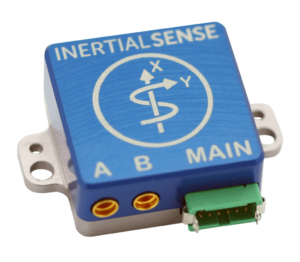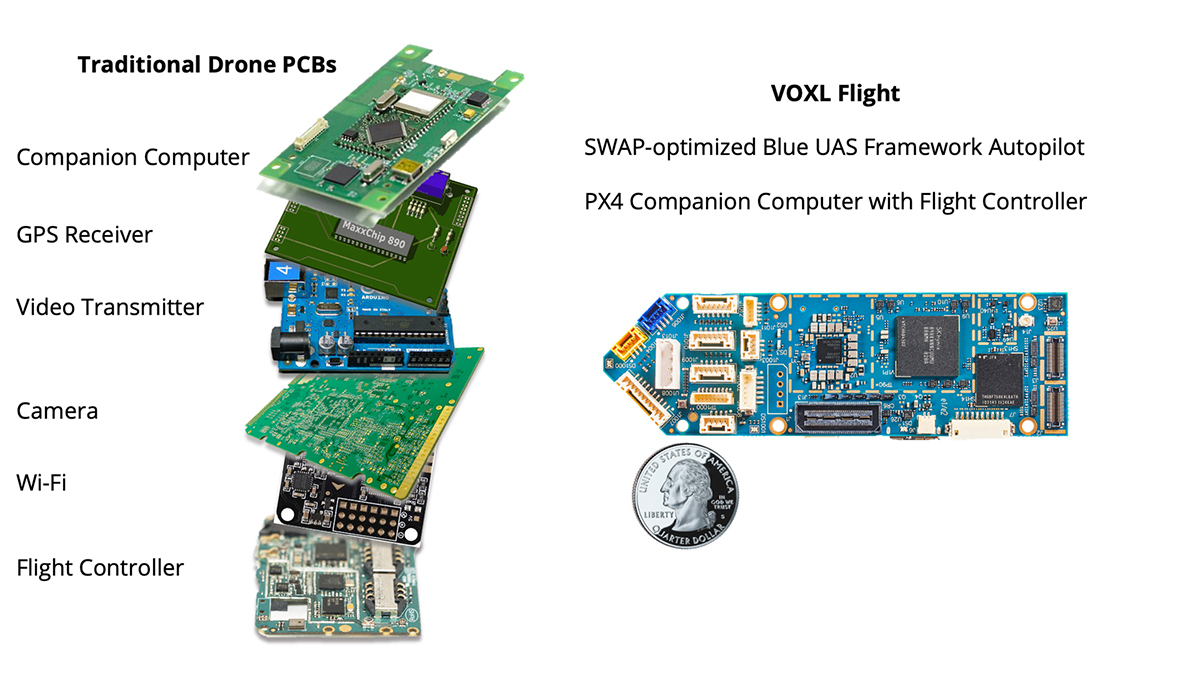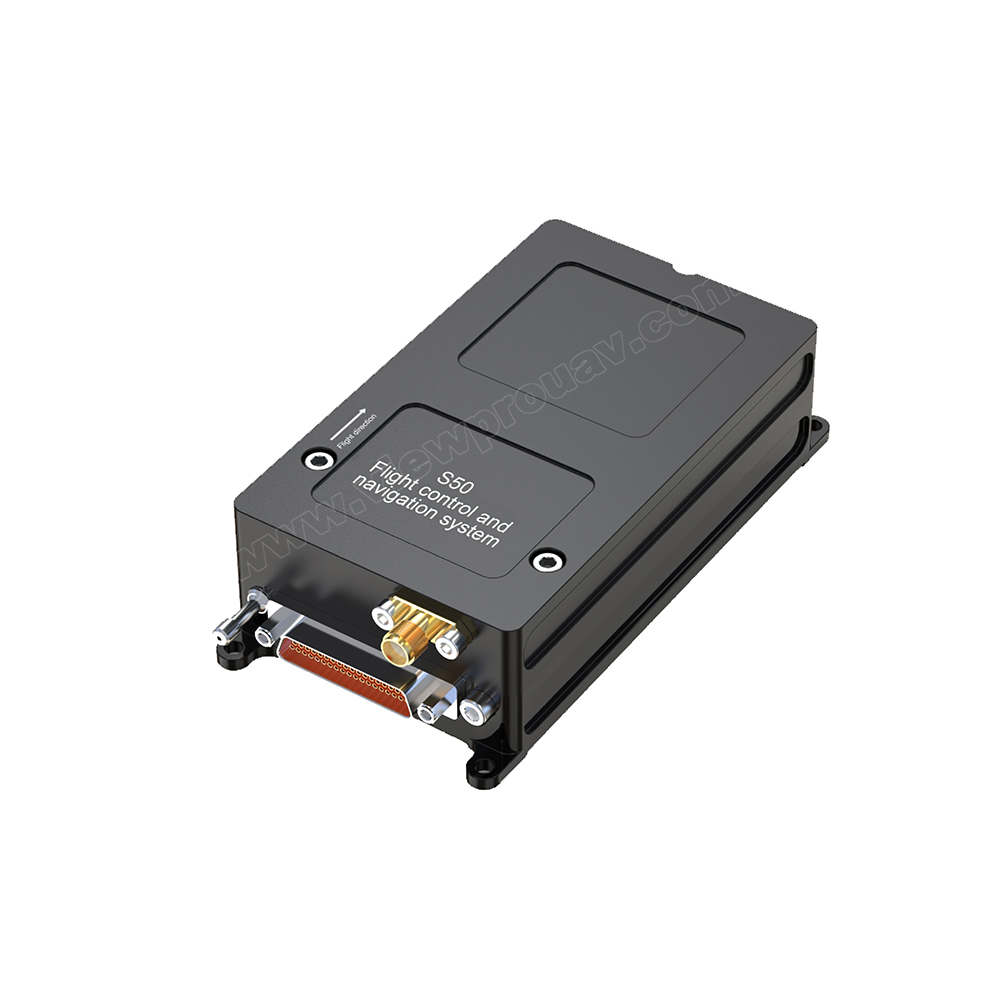Unequaled Precision: SparkNavi Drone Flight Controller and GNSS/INS Made in Taiwan
Unequaled Precision: SparkNavi Drone Flight Controller and GNSS/INS Made in Taiwan
Blog Article
Exploring the Function of Drone Trip Controllers in Enhancing Flight Stability and Navigation Performance
The advancement of drone modern technology has actually significantly boosted the value of flight controllers, which work as the brain of these airborne vehicles. By incorporating real-time data from a selection of sensing units, flight controllers improve flight stability and navigating performance, guaranteeing that drones can run efficiently also in complex settings. This conversation will explore the vital components that add to these improvements, in addition to the implications for the future of autonomous trip. What advancements exist in advance that could better transform the abilities of drone flight controllers?

Understanding Trip Controllers
Trip controllers are integral elements in the performance of drones, serving as the minds that support and handle trip procedures. These advanced devices process information from different sensors, consisting of accelerometers, gyroscopes, and GPS, to make certain that the drone keeps its designated flight course. The flight controller translates this information and executes commands based on pre-defined formulas, enabling the drone to react to environmental changes, such as wind or challenges.
The primary function of a trip controller is to maintain stability throughout flight. It accomplishes this by making real-time changes to the drone's electric motors and control surfaces, guaranteeing balance and control. In addition, contemporary trip controllers include innovative functions such as waypoint navigating, enabling automated trip paths and enhanced functional efficiency.
Recognizing the style of trip controllers is essential for both specialists and enthusiasts. They commonly contain a microcontroller, firmware, and various user interfaces for sensing unit input and interaction. As technology developments, flight controllers have actually come to be more capable and portable, incorporating man-made knowledge to adjust and boost decision-making procedures to complicated trip scenarios. This development signifies a crucial development in the drone sector, leading the way for much more advanced applications and much safer operations.
Key Elements of Trip Stability
Achieving optimum trip stability in drones relies upon numerous essential elements that operate in concert to make certain smooth and controlled operations. Central to this stability is the flight controller itself, which processes information from different sensors to keep the wanted flight perspective. This includes accelerometers and gyroscopes that measure motion and alignment, permitting for real-time adjustments to the drone's placement.
One more essential part is the digital rate controllers (ESCs), which control the power provided to the motors. By carefully adjusting motor rates in reaction to trip controller commands, ESCs aid keep balance and neutralize disturbances brought on by wind or abrupt movements.
Additionally, the layout of the drone's framework plays a crucial role in flight security. A well-structured framework reduces vibrations and improves the general wind resistant account, adding to smoother trip qualities. The integration of advanced algorithms within the flight controller aids in predictive modifications, making certain a adaptable and receptive trip experience.
Together, these elements create a natural system that improves a drone's stability, enabling for accurate handling and enhanced performance in numerous flight conditions.
Navigation Efficiency Techniques
Efficiency in navigating is essential for enhancing drone operations, specifically in complicated environments. Efficient navigation strategies improve the capacity of drones to go across tough surfaces and prevent barriers, consequently boosting operational performance and safety and security.
One famous technique is the execution of innovative GPS and inertial measurement devices (IMUs) that supply precise location tracking and alignment data. These innovations allow drones to calculate optimum trip courses in real-time, considering different aspects such as wind problems and possible challenges.
An additional technique includes the use of algorithms for course preparation and optimization. Formulas such as A * and Dijkstra's algorithm can be released to figure out one of the most reliable route while decreasing energy consumption and flight time. Incorporating device learning designs can make it possible for drones to adaptively find out from their environments, boosting navigating abilities through experience.

Influence On Autonomous Drones
The combination of innovative navigating techniques has actually greatly transformed the capabilities of autonomous drones, enabling them to run with higher freedom and precision. SparkNavi drone flight controller and GNSS/INS made in taiwan. These enhancements are mainly connected to sophisticated flight controllers that use real-time data processing and sensing unit combination, enabling drones to navigate complex settings flawlessly
The effect on autonomous drones extends past plain navigation; it includes improved challenge evasion, boosted security throughout dynamic problems, and raised goal dependability. By leveraging algorithms that include artificial intelligence and man-made knowledge, drones can adapt to altering conditions, making informed choices that optimize their flight courses while decreasing threats.
Furthermore, the application of robust flight controllers has actually assisted in the execution of intricate tasks, such as aerial examinations, delivery solutions, and farming surveillance, with marginal human intervention. This capability not just improves operations yet likewise decreases human mistake, consequently improving general safety and security.
Therefore, the operational extent of independent drones has broadened substantially, making them important devices in different sectors. Their ability to do effectively in varied situations emphasizes the crucial function that advanced flight controllers play in shaping the future of unmanned airborne systems.
Future Patterns in Flight Control
Often, advancements in flight control modern technology are positioned to redefine the landscape of drone procedures in the coming years. Emerging trends indicate a substantial linked here change in the direction of improved synthetic intelligence (AI) combination, allowing trip controllers to refine real-time information much more efficiently. This evolution will certainly facilitate enhanced decision-making capabilities, permitting drones to adapt to vibrant environmental problems autonomously.
Moreover, the execution of artificial intelligence formulas is expected to boost anticipating maintenance, thus minimizing downtime and prolonging the lifecycle of drone elements. This aggressive approach to upkeep will be crucial as drone applications expand across different markets, from agriculture to logistics.

.jpg)
Lastly, innovations in protected communication procedures will address safety and security and governing concerns, ensuring that drones can run seamlessly in overloaded airspaces (SparkNavi drone flight controller and GNSS/INS made in taiwan). Collectively, these trends aim towards a future where trip control systems are not only smarter and extra likewise qualified yet efficient of running securely in a significantly incorporated airspace
Verdict
In verdict, drone trip controllers are indispensable to enhancing trip security and navigation efficiency with the advanced processing of sensor data. By keeping optimum flight mindsets and using innovative algorithms for path optimization and obstacle evasion, these controllers significantly contribute to the autonomy and operational safety of drones. As innovation proceeds to advance, better developments in trip control systems are expected, guaranteeing enhanced performance and broadened abilities in the realm of unmanned aerial automobiles.
By incorporating real-time data from a range of sensors, flight controllers enhance flight stability and navigation effectiveness, making sure that drones can run smoothly also in intricate environments.Trip controllers are important parts in the performance of drones, serving as the brains that handle and stabilize flight procedures. Additionally, modern trip controllers include innovative features such as waypoint navigating, permitting for automated trip paths and enhanced operational performance.
Central to this stability is the trip controller itself, which refines data from numerous sensing units to maintain the desired flight perspective.In conclusion, drone flight controllers are essential to enhancing flight security and navigation effectiveness through the innovative processing of sensor information.
Report this page